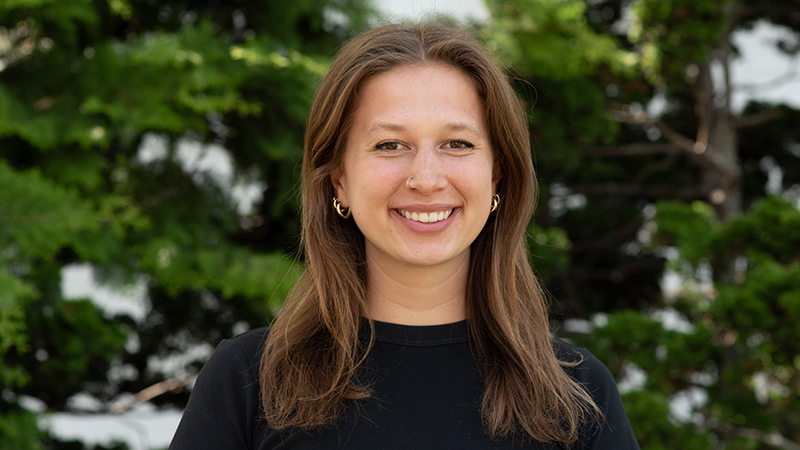I study perception. Specifically, I study input from the auditory and visual systems and how the brain uses its memories to influence what we see and hear. My research seeks to understand how our past experiences can change how our senses work and then alter our behavior. I want to understand how we interpret the world and what happens when our perception of the world fails.
Photo by Celia Muto
What drew you to this area of neuroscience?
As an undergraduate, I majored in Neuroscience and Philosophy, where many of my philosophy classes focused on questions such as “what is knowledge?”, or “what is consciousness?”. We debated these questions using logic, but I believed that neuroscientific research could offer deeper insights. While perception is different than consciousness, it is a component of it, and understanding perception is essential to addressing these questions. Once perception is conceptualized, we can begin to understand how perception can go awry in disorders, such as PTSD, schizophrenia, or autism.
What is the first experiment you remember doing?
Growing up in the Midwest, I was surrounded by manufacturing companies. Every year a local nonprofit – The Einstein Project – held a Science Expo which focused on providing hands-on STEM education to children. The Expo featured many community organizations and manufacturing companies which showcased various scientific principles. I have a vivid childhood memory of learning about non-Newtonian fluids through Oobleck, a mixture made from cornstarch and water. One booth featured a large vat of Oobleck which people could run across. I spent the afternoon experimenting with my speed and pressure as I ran across the fluid, taking mental note of how it responded. While not a formal experiment, it was a formative experience where I used the same observation, logic, and reasoning that I now use every day in my job as a neuroscientist.
What is an emerging area of science that you are excited about? Where you see potential for big discoveries in the next decade?
One area I am excited about is assisted psychedelic therapy – an old concept that has been recently reapproved for research as alternative treatment method for mental health disorders. I am especially interested in how psychedelics affect large-scale brain networks, such as the Default Mode Network and Task Positive Network, and what that could mean about perception in a non-altered mental state.
What are your hobbies outside of the lab – current, past, or future?
You can often find me outside, either running long distance, alpine skiing, mountain biking or just walking. Otherwise, I occupy my time by storytelling through multiple mediums: photography, collages, and writing. I spend most of my time exploring and enjoying the world around me. As my grandpa always said while I was growing up, “home is a place to hang your hat”.

